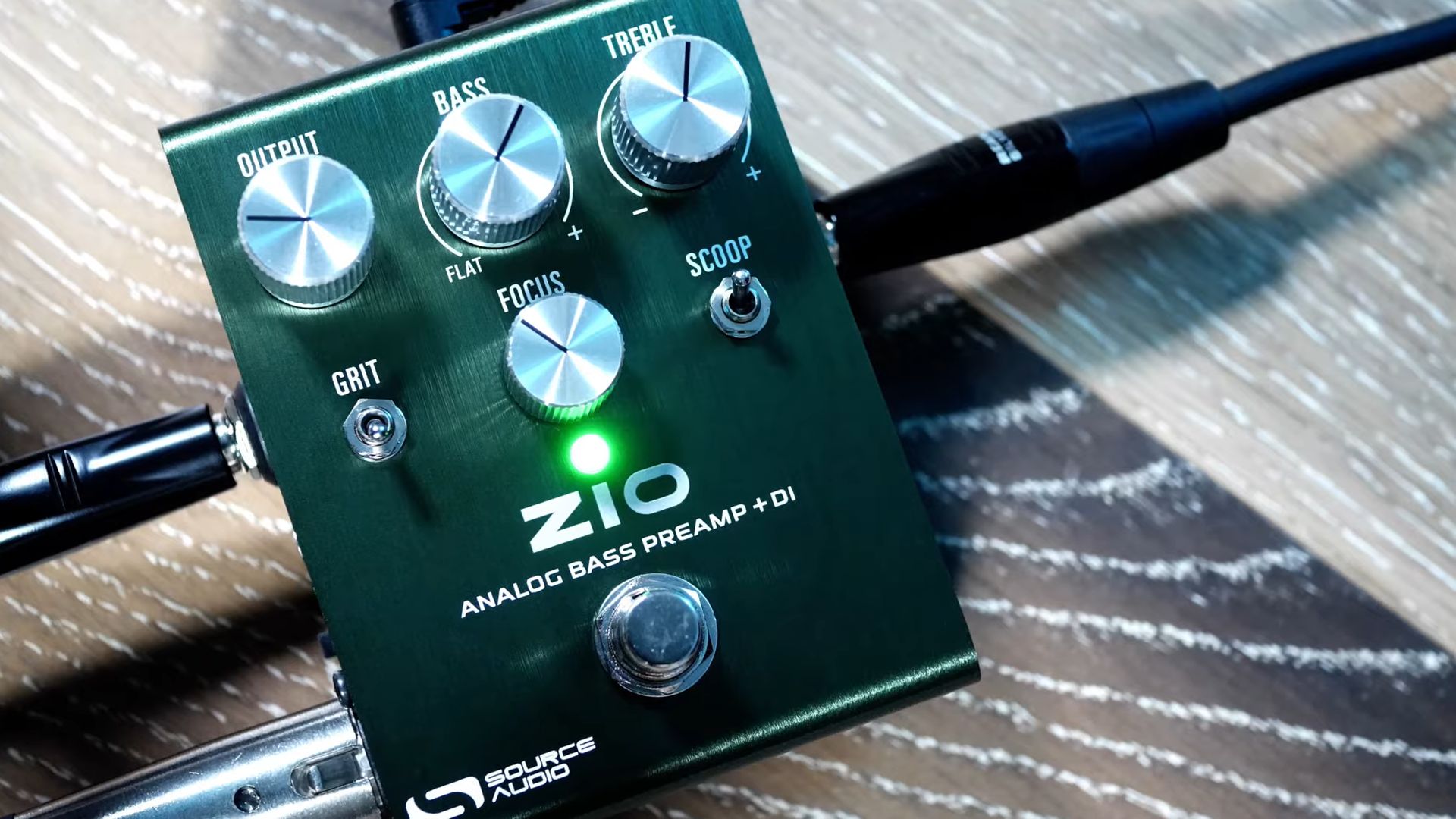“An all-analog tone-shaping machine”: Source Audio and Shoe Pedals team up for the Zio, a preamp and DI pedal designed specifically for bass
With four EQ controls and toggles for scoop and grit, the mid-priced two-in-one pedal aspires to offer greater clarity and articulation for low-end grooves

Source Audio has announced the release of its all-analog, ultra-low noise bass preamp and DI pedal, the Zio. Specifically designed for bass guitar tone-shaping, the pedal results from a collaboration between Source Audio's lead engineer, Jesse Remignanti and Christopher Venter, the head of Brooklyn-based pedal makers, Shoe Pedals.
It's been designed for ease-of-use, and can be placed on pedalboards, in front of amps, or XLR direct out directly to a front-of-house mix or recording interface thanks to a choice of three independent outputs. A third output choice comes via a dedicated headphone jack.
With Burr-Brown Op-Amps under the hood for “maximum headroom”, alongside offering a clean preamp, there's a simple array of EQ filter controls for nitty-gritty tone-tweaking. These come in the form of controls for output, bass, treble and focus.
The bass control is said to provide “a substantial low-end boost” at around 100Hz and works to gently reduce any muddy low-mids for clarity. Its focus knob sweeps the cut-off point of a high-pass filter to subdue excessive sub-bass, with a treble control helping enhance articulation or smoothen out its tones. Its output offers up to +16db of boost, or up to -6db of cut.
These are accompanied by two toggles for grit and scoop, which can be activated independently or simultaneously. The grit vies to capture the sound of a vintage amp pushed into breakup territory. Its grittiness can be adjusted with what Source Audio calls a "set-it-and-forget-it” gain control located out of sight on the side of the pedal.
The scoop toggle, meanwhile, triggers a low-mid cut to clean up overly muddy tones, whilst also kicking in an upper-midrange presence boost so there isn’t an excess of bass-rumbling brown notes.
The feature was intuited to replicate the ‘Pultec Trick’ studio engineers have been using since the ‘50s, where vintage Pultec EQP-1A studio rack units are added to signal chains to offer greater clarity and articulation to the output. It could also prove to be a nifty feature for slap players specifically.
Get The Pick Newsletter
All the latest guitar news, interviews, lessons, reviews, deals and more, direct to your inbox!
During his review of the pedal (above), Nate Navarro called the Zio pedal "an all-analog, tone-shaping machine” that packs "great features". In the video, the bassist who has played with Porcupine Tree and Devin Townsend, puts the pedal through its cleanest and grittiest paces.
With a 4x3" scale, it should sit snuggly on most pedalboards, with its dark green finish making for a rather snazzy-looking unit. Priced at $249, it sits in the middle bracket price range when compared to other preamp and DI pedals on the market.
For more information, head to Source Audio.
A freelance writer with a penchant for music that gets weird, Phil is a regular contributor to Prog, Guitar World, and Total Guitar magazines and is especially keen on shining a light on unknown artists. Outside of the journalism realm, you can find him writing angular riffs in progressive metal band, Prognosis, in which he slings an 8-string Strandberg Boden Original, churning that low string through a variety of tunings. He's also a published author and is currently penning his debut novel which chucks fantasy, mythology and humanity into a great big melting pot.
“Jimi was staying at a hotel in Times Square. He had his hair set in pink curlers and we would just talk band drama”: Electro-Harmonix founder Mike Matthews on befriending Hendrix, booking Chuck Berry and the birth of pedal culture
“Our answer to everything players have asked for and more”: Neural DSP’s Nano Cortex had one major drawback – but now it’s been addressed with a huge free firmware update that takes on Kemper and TONEX










